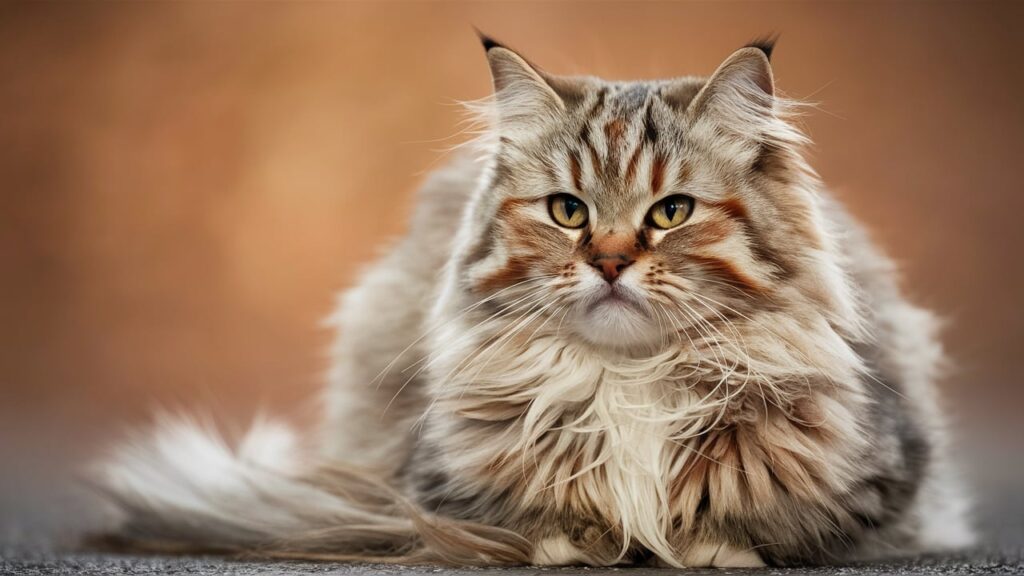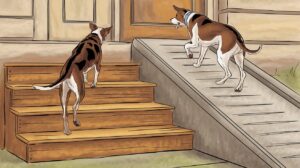The best way to brush a long-haired cat is to use a slicker brush. Start at the top and work your way down to avoid mats.
Brushing long-haired cats is essential for their health and comfort. Their luxurious fur can easily become tangled and matted, leading to skin issues and discomfort. Regular grooming helps remove loose hair, dirt, and dander, promoting a clean coat and reducing shedding around the house.
It also provides an excellent bonding opportunity between you and your feline friend. While some cats may enjoy the process, others might resist it. Patience and positive reinforcement can make brushing a more pleasant experience. Understanding the right techniques and tools will ensure your long-haired cat remains happy and healthy.
Intro To Feline Grooming
Grooming long-haired cats is essential for their health and happiness. It helps prevent painful mats and keeps their fur shiny and clean. Regular brushing also reduces shedding and hairballs.
Understanding your cat’s grooming needs ensures a positive experience. Each cat has a unique temperament. Some enjoy being brushed, while others dislike it. Start with a gentle approach. Let them sniff the brush first. This helps them feel more comfortable.
Use the right tools for the job. A slicker brush works well for removing dirt and loose hair. A wide-toothed comb is perfect for detangling. Always reward your cat with treats after grooming sessions. This helps build a positive association with brushing.
Essential Tools For The Task
Choosing the right brush is crucial for grooming a long-haired cat. A slicker brush works well to remove dirt and loose hair. It features thin teeth that penetrate the fur easily. For knots and mats, consider using a wide-toothed comb. This tool helps untangle fur without pulling.
Additional grooming supplies can enhance the experience. A de-shedding tool helps reduce shedding and matting. Grooming gloves can also be effective, allowing you to pet your cat while removing loose fur. Regular grooming keeps your cat’s coat healthy and shiny.
| Tool | Purpose |
|---|---|
| Slicker Brush | Removes dirt and loose hair |
| Wide-Toothed Comb | Untangles knots and mats |
| De-shedding Tool | Reduces shedding |
| Grooming Gloves | Pets while grooming |
Preparation Steps
Creating a comfortable grooming area is essential for your long-haired cat. Choose a spot that is quiet and free from distractions. Lay down a soft blanket or towel for your cat to sit on. This will help them feel secure and relaxed.
Before grooming, it’s important to calm your cat. Spend a few minutes petting them gently. Use a soft voice to help them relax. Offer some treats to create a positive association with grooming. Avoid sudden movements or loud noises, as these can startle your cat.
Techniques And Patterns
Start brushing your long-haired cat with gentle strokes. This approach helps your cat feel comfortable. Begin at the head and move towards the tail. Always brush in the direction of the fur growth.
Using a slicker brush is highly recommended. It effectively removes dirt and loose hair. Maintain a steady pace while brushing. Too much pressure may cause discomfort. Brush your cat at least two to three times a week. Frequent grooming prevents mats and tangles.
During brushing, pay close attention to sensitive areas like the belly and hindquarters. Use softer strokes in these regions. Encourage your cat with treats to create a positive experience. This will make grooming time enjoyable for both of you.
Dealing With Mats
Identifying mats and tangles on your long-haired cat is essential. Look for areas where the fur feels clumpy or rough. These spots often occur behind the ears, under the arms, and around the tail. Regular checks can help catch these issues early.
For safe removal of mats, use a specially designed mat brush. Start at the edges of the mat, gently working your way in. Avoid yanking, as this can hurt your cat. If the mat is too tight, use scissors to carefully cut it away, ensuring not to touch the skin. Patience is key during this process to keep your cat calm.
Skin And Coat Health
Regular brushing helps maintain skin and coat health for long-haired cats. It prevents mats and tangles, which can cause discomfort. Checking for skin issues during brushing is essential. Look for redness, bumps, or irritation.
Brushing removes dirt, dander, and loose hair, promoting a cleaner home. It also reduces hairballs by minimizing shedding. This routine fosters a strong bond between you and your cat. Regular grooming can help detect health problems early.
Here are some benefits of regular brushing:
- Reduces mats and tangles
- Improves skin health
- Decreases shedding
- Enhances coat shine
- Strengthens your bond
Bathing Considerations
Bathing a long-haired cat requires careful timing. Bathing should happen only when necessary. Look for signs of dirt or odors. Cats generally need a bath every few months.
To make bath time enjoyable, prepare everything before starting. Gather shampoo, towels, and a non-slip mat. Use lukewarm water to avoid shocking your cat. Keep the bathroom quiet and calm.
Start by wetting the fur slowly. Talk softly to reassure your cat. Rinse thoroughly to remove all shampoo. Afterward, wrap your cat in a towel to dry.
Reward your cat with treats after the bath. This helps create a positive association with bathing.

Grooming Challenges
Grooming a cat that dislikes brushing can be tricky. Start by letting your cat sniff the brush. This helps them get familiar with it. Use treats to create a positive association with brushing. Never force the brush on them. Gradually introduce short brushing sessions. Always watch for signs of stress.
Choosing between professional grooming and home care is essential. Professional groomers have experience with matted fur and can offer specialized services. Home care allows for bonding time with your cat. Regular brushing at home can prevent mats and tangles.
Ultimately, the goal is to keep your cat’s coat healthy. A calm and gentle approach makes a big difference.
Maintenance And Routine
Creating a regular grooming schedule is essential for your long-haired cat. Brush your cat at least 2-3 times a week. This helps prevent tangles and mats. Cats with long hair can easily develop knots. A consistent routine keeps their coat healthy.
Long-term benefits of consistent grooming are significant. Regular brushing reduces shedding and dander in your home. It also helps to identify skin issues early. A clean coat can improve your cat’s overall happiness. Plus, it strengthens the bond between you and your furry friend.
Advanced Grooming Tips
Trimming your cat’s fur can prevent future mats. Regular trimming helps maintain a healthy coat. Focus on areas prone to tangles, like behind the ears and under the legs. Use sharp grooming scissors for better control. Always be gentle and calm during the process.
Seasonal grooming is essential for long-haired cats. Spring and summer require more frequent brushing due to shedding. Fall and winter may need less, but mats can form in colder months. Stay aware of your cat’s coat changes and adjust grooming routines accordingly.
Keeping a grooming schedule ensures your cat stays comfortable. Regular brushing reduces hairballs and keeps their skin healthy. Always reward your cat with treats after grooming sessions to make it a positive experience.
Frequently Asked Questions
How To Properly Brush Long Hair Cat?
To properly brush a long-haired cat, use a slicker brush to remove tangles. Start from the head and work towards the tail. Brush gently, section by section, to avoid pulling. Always reward your cat afterward to create a positive experience.
Regular brushing prevents matting and keeps their coat healthy.
What Kind Of Brush Is Best For Long Hair Cats?
The best brush for long-haired cats is a slicker brush. It effectively removes dirt, dander, and loose hair. A wide-toothed comb can also help detangle mats. Regular brushing keeps their coat healthy and prevents matting. Choose tools that suit your cat’s specific needs for optimal grooming.
How Do You Brush A Long Haired Cat That Hates It?
To brush a long-haired cat that dislikes it, introduce the brush slowly. Let them sniff it first. Use treats to create positive associations. Brush gently, focusing on small areas at a time. Keep sessions short and stop if they seem stressed.
Gradually increase brushing time as they become more comfortable.
Do Long-haired Cats Like Being Brushed?
Long-haired cats can have varied responses to brushing. Some enjoy the process, while others may dislike it. Regular brushing is essential to prevent mats and tangles, making it a necessary routine for many breeds. Positive reinforcement can help make brushing a more pleasant experience.
Conclusion
Brushing your long-haired cat can be a rewarding experience. It not only keeps their coat healthy but also strengthens your bond. Choose the right tools and techniques to make grooming enjoyable for both of you. With patience and consistency, your cat will look fabulous and feel comfortable.
Happy grooming!








